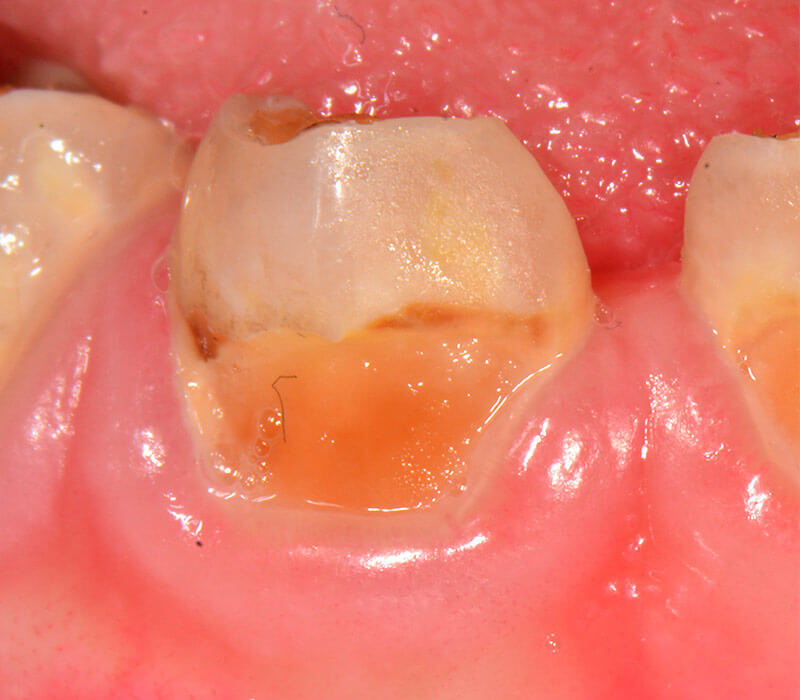This review on early childhood caries (= caries in milk teeth) summarizes that this disease is still highly prevalent all around the world. Even in Germany, studies show that approximately 50% of children in their first year at school (6–7 years old) are affected.
A high consumption of sugar and inadequate dental care cause bacteria to multiply and produce acids in the oral cavity. The acids (primarily lactic acid) dissolve the enamel, resulting in cavities. Cavities in milk teeth can progress much quicker than caries in permanent teeth: the enamel of milk teeth is only around half as thick as that on permanent teeth (approx. 0.5 to 1 mm vs approx. 1 to 2 mm). In addition, the microstructure of milk teeth is also less crystalline. A sugar-rich diet results in an ecological imbalance in the oral cavity and on the surface of the teeth promoting the growth of acid-producing bacteria: interestingly, caries can be caused by many different bacteria out of the over 600 known species.
If brushing teeth does not completely remove plaque (Image 1), caries can develop in the tooth (Image 2) and interdental spaces (Image 3).
Caries in milk teeth can be prevented by reducing sugar intake and improving oral hygiene-habits. Most important for children is that parents actively assist their children with oral care until they are able to properly brush their teeth by themselves. Fluoride is used in many toothpastes. 500 ppm fluoride is often recommended for children. However, in many countries toothpastes for children contain 1000 ppm Fluoride or even a higher concentration. As toothpaste with more than 500 ppm fluoride increases the risk of fluorosis (i.e. development of permanent discolorations on the teeth) if swallowed, alternative approaches are needed. These alternative approaches are based on biomimetic agents: hydroxyapatite as a calcium-phosphate is one of them. Hydroxyapatite can prevent cavities and is safe if swallowed.
This is why, among others, biomimetic hydroxyapatite is especially suitable for children in terms of cavity protection in children.
Read more in the study titled "Early Childhood Caries: Epidemiology, Aetiology, and Prevention"
Sources: Meyer, F. & Enax, J. Early childhood caries: Epidemiology, aetiology, and prevention. Int. J. Dent. 2018, 7, (2018).





